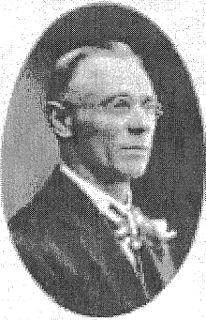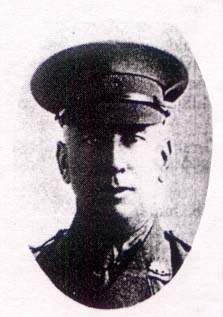Related Research Articles

Henry Daglish was an Australian politician who was the sixth premier of Western Australia and the first from the Australian Labor Party, serving from 10 August 1904 to 25 August 1905. Born in Ballarat, Victoria, Daglish studied at the University of Melbourne. In 1882, he worked as a mechanical engineer, but soon switched to working in the Victorian public service. He first stood for election in 1896, but was unsuccessful in winning the Victorian Legislative Assembly seat of Melbourne South. He then moved to Subiaco, Western Australia, gaining work as a chief clerk in the Western Australian Police Department. In 1900, Daglish was elected to the Subiaco Municipal Council. On 24 April 1901, Daglish was elected as the member for the newly created seat of Subiaco, becoming one of six Labor members in the Western Australian Legislative Assembly. He was elected by the party as its whip, and he tendered his resignation from the Subiaco council on 1 May 1901. On 1 December 1902, he was sworn in as the mayor of Subiaco, having been elected the previous month.

Carmen Mary Lawrence is an Australian academic and former politician who was the Premier of Western Australia from 1990 to 1993, the first woman to become the premier of an Australian state. A member of the Labor Party, she later entered federal politics as a member of the House of Representatives from 1994 to 2007, and served as a minister in the Keating Government.

The Division of Curtin is an Australian electoral division in Western Australia.

John Scaddan, CMG, popularly known as "Happy Jack", was Premier of Western Australia from 7 October 1911 until 27 July 1916.
Shenton Park is a suburb of Perth, Western Australia, located within the City of Nedlands and City of Subiaco and 4 km (2.5 mi) west of the central business district. Its postcode is 6008. The suburb is named after the park that it contains, Shenton Park, which was named after George Shenton who originally owned the land that is now the suburb of Shenton Park.

Daglish is a small western suburb of Perth, the capital of Western Australia. It is approximately 4 kilometres (2.5 mi) west of the Perth central business district, and within the City of Subiaco local government area. It was named after Henry Daglish, who was the Mayor of Subiaco, member for the electoral district of Subiaco and Premier of Western Australia from 1904 to 1905. The Daglish railway station opened in 1924 in response to population growth in the neighbouring suburb of Subiaco. The following year, the Municipality of Subiaco bought the land west of the railway station to sell for housing. Development occurred over the following 20 years. The initial development next to the railway station used the garden suburb principles, with large lots and gardens, curved streets, and lots of green space. Today, the suburb has significant heritage value due to its uniform streetscape, with most original homes still standing. It has a population of 1,419 as of the 2016 Australian census.

Nedlands is a Legislative Assembly electorate in the state of Western Australia. Nedlands is named for the inner western Perth suburb of Nedlands which falls within its borders.

The Electoral district of Perth is a Legislative Assembly electorate in the state of Western Australia. Perth is named for the capital city of Western Australia whose central business district falls within its borders. It is one of the oldest electorates in Western Australia, with its first member having been elected in the inaugural 1890 elections of the Legislative Assembly.

Philip Collier was an Australian politician who served as the 14th Premier of Western Australia from 1924 to 1930 and from 1933 to 1936. He was leader of the Labor Party from 1917 to 1936, and is Western Australia's longest-serving premier from that party.

John Barkell Holman was an Australian politician who served in the Western Australian Legislative Assembly from 1901 to 1921 and 1923 to 1925.
The Electoral district of Glendalough was a Legislative Assembly electorate in the state of Western Australia. The district was named for the inner northern Perth suburb of Glendalough, which fell within its borders. The seat was abolished after two terms at the 1994 redistribution, taking effect from the 1996 election due to the one vote one value legislation. Most parts of the former seat presently fall within the seats of Churchlands and Perth.

Bartholomew James Stubbs was the first sitting member of the Western Australian Legislative Assembly to be killed in action while on military service for his country.
Sydney Stubbs CMG was an Australian politician who served twice in the Parliament of Western Australia: in the Legislative Council from 1908 to 1911, and then in the Legislative Assembly from 1911 to 1947. He was Speaker of the Legislative Assembly from 1930 to 1933, and had been Mayor of Claremont and then Mayor of Perth prior to entering parliament.
Michael Francis "Frank" Troy was an Australian politician who served in the Legislative Assembly of Western Australia from 1904 to 1939. A member of the Labor Party, he was the Speaker of the Legislative Assembly from 1911 to 1917, the first from that party to hold the position. Later in his career, Troy spent long periods as a frontbencher, serving as a minister in the first and second Collier governments, and then in the Willcock government. After leaving parliament, he served as Agent-General for Western Australia from 1939 to 1947.

George "Mulga" Taylor was an Australian labour leader and politician who was a member of the Legislative Assembly of Western Australia from 1901 to 1930. He was a minister in the government of Henry Daglish, and later served as Speaker of the Legislative Assembly from 1917 to 1924.
Gabriel Thomas Dadour AM was an Australian doctor and politician who was a member of the Legislative Assembly of Western Australia from 1971 to 1986, representing the seat of Subiaco. He was a member of the Liberal Party until 1984, when he resigned to sit as an independent. He was remembered as an outspoken member of parliament unafraid of criticising his own party on issues he felt strongly about.
Samuel McConnell Brown was an Australian politician who was a member of the Legislative Assembly of Western Australia from 1917 to 1921, representing the seat of Subiaco.
Walter Richardson was an Australian politician who was a member of the Legislative Assembly of Western Australia from 1921 to 1933, representing the seat of Subiaco.
A by-election for the seat of Subiaco in the Legislative Assembly of Western Australia was held on 10 November 1917. It was triggered by the death of the sitting member, Bartholomew Stubbs of the Labor Party, on 26 September 1917. The election was won by Samuel Brown, a member of the Subiaco Municipal Council who was standing for the Nationalist Party. Brown was one of six candidates endorsed by the Nationalists, and won the seat despite only polling 15.02 percent of the first-preference vote.
The 1994 Glendalough state by-election was a by-election for the seat of Glendalough in the Legislative Assembly of Western Australia held on 19 March 1994. It was triggered by the resignation of Carmen Lawrence on 14 February 1994, in order to contest the House of Representatives at the 1994 Fremantle by-election. The Labor Party retained Glendalough at the by-election, with their candidate, Michelle Roberts, recording 52.7 percent of the two-party-preferred vote.